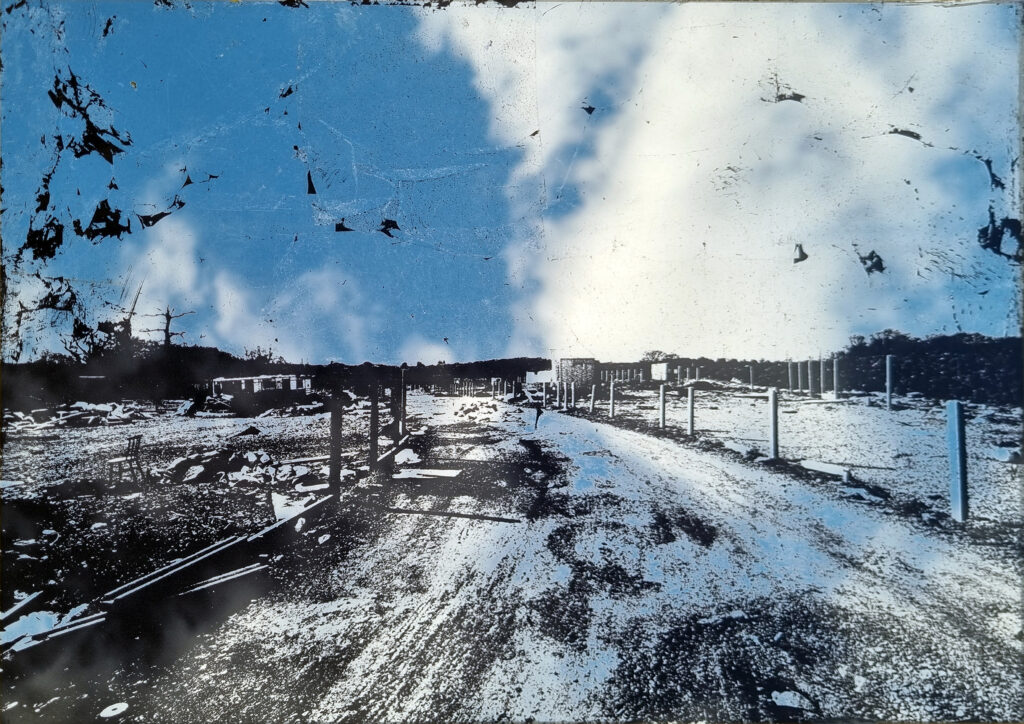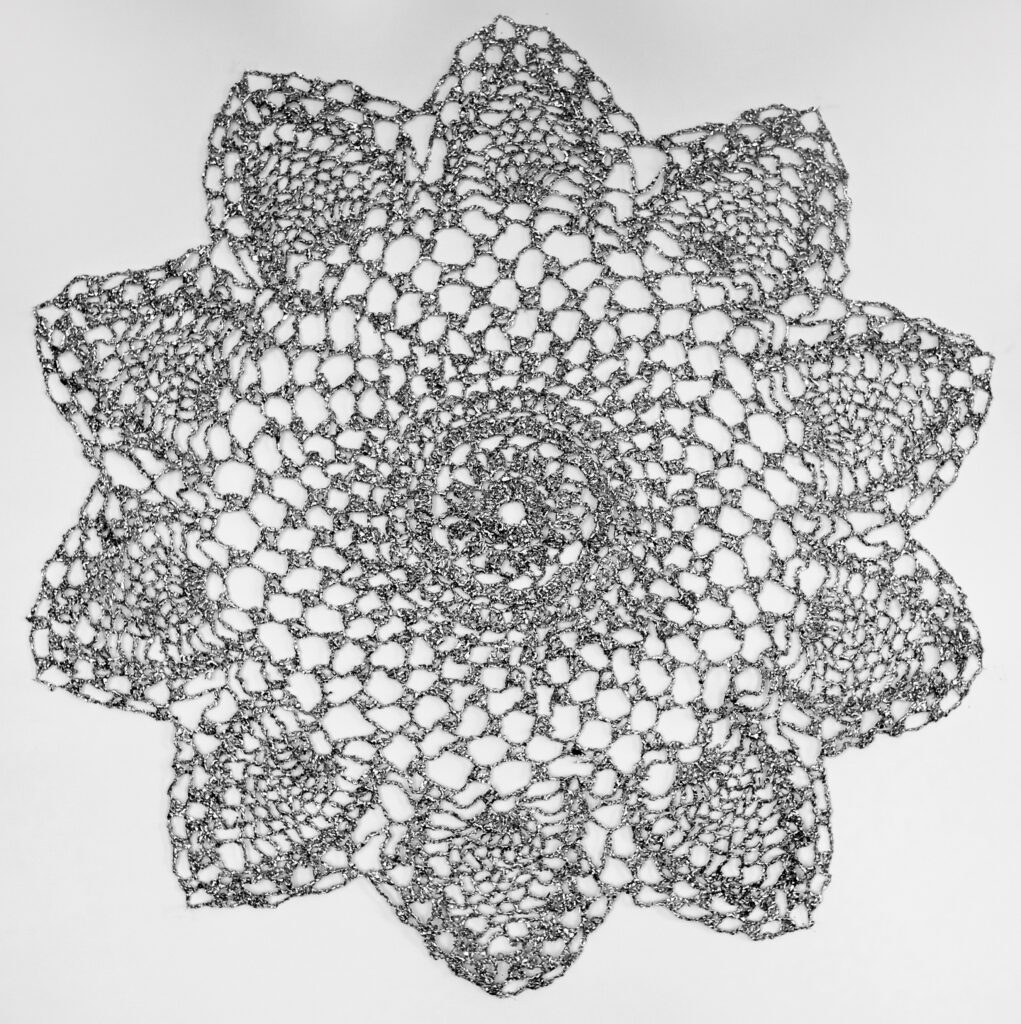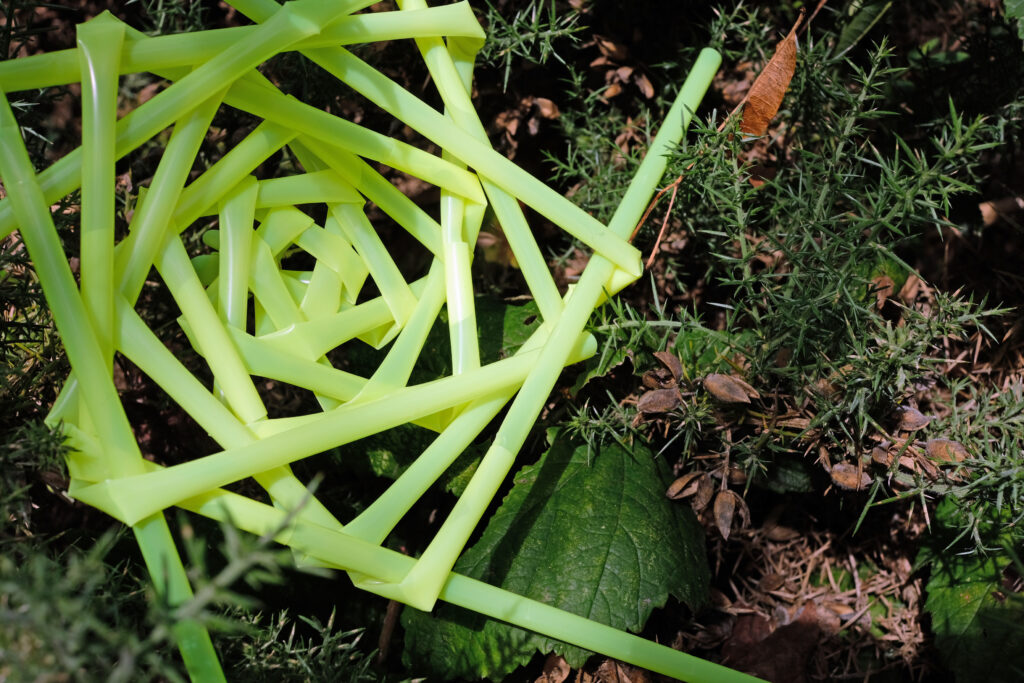At the Threshold: reflections on Roma existence through art by Daniel Baker
Posted on December 14, 2021 by Stephanie Ballantine

As a Romani Gypsy and an artist, the relationship between Roma life and Roma artistic practice has long held fascination for me. I continue to explore these phenomena through my encounters with Roma material culture and increase my understanding through my artistic practice, which draws upon aspects of Roma aesthetics and Gypsy visuality. It is through this lens that I have glimpsed the complex significance of the Roma experience and its implications for wider society—not least as an example for rethinking strategies of existence. A proposition that seems more pressing now than ever as we experience the ravages of the current health and climate emergencies. To expand upon these ideas, and to offer alternative insight, examples of my artworks are shown with brief footnoted narrations to perform a parallel narrative.
Roma communities continue to exist outside of societies that they are, at the time, surrounded by. Assigned to the margins of society, a state of contingency continues to underpin the collective Roma experience and has resulted in strategies of survival that carry with them the transgressive potential to challenge and reshape the boundaries of convention and societal consensus. Paradoxically, that same potential lies at the root of a universal mistrust of Roma; a mistrust wedded to the notion of Roma as outsiders—unfixed, un-rooted, and ultimately unaccountable. It is, however, the creative potential of those very characteristics of flexibility and spontaneity that can lead to new ways of understanding ourselves and our lives together; an approach which positions Roma life as a locus of creative resistance rather than a threat to the status quo.

A hard-won understanding of the precarity of life on the edge of society has informed the Roma way of life resulting in a worldview which has often positioned Roma groups at odds with society and the nation state. This kind of dynamic facilitates an ideal of moving away from the routine political organisation of life to offer the potential to forge new ways of being and alternative models of existence. As the original Bohemians Roma and have been admired for personifying an outsider’s creative approach to living and thinking; qualities that greatly influenced the artists and thinkers of the avant-garde to position Bohemianism as the founding model of the cultural vanguard of the past. It is this legacy upon which the archetype of today’s contemporary artist is built; symbolising multiple sites of action and agency and further illustrating the ways in which the mechanisms and values of Roma existence can allow a new political model to be imagined.

The Roma approach to existence exemplifies an alternative to the increasing divergence between artistic practice and the practice of living; a divergence encouraged by Western hegemonies to reflect a set of values that are all but exclusively framed by market interests and hierarchies of knowledge. In contrast to this there seems little distinction between Roma artistry and Roma acts of living in my view. This is clearly evident within the Roma aesthetic where the collective qualities embedded in the objects and performances that originate from or circulate within Roma communities can be seen to both reflect and inform Roma daily life. A greater understanding of the unification of the practices of art and living is something that wider society can benefit from, not just in terms of the reclamation of art from the privileged arena of the museum and the market, where emphasis is placed on the demarcation of intellectual and financial property, but also in terms of the enrichment of the everyday lives of us all.
In the absence of a literary tradition the Roma have acquired an acute facility for aesthetic communication. This goes some way to accounting for the development of a keen visual and sensory vocabulary, a vocabulary too important to be confined to one realm at the cost of another. It is this aesthetic power, developed during the extended state of emergency that has characterised the evolution of Roma culture from the beginning (as a collectivity of diverse yet distinctively connected groups), that has, I believe, the potential to offer new possibilities for the consideration of our global futures.
The evolution of the integration of artistic practice into Roma daily life becomes clearer when we consider that all objects carried by travelling communities were required to perform multiple roles. The resulting multivalency is born of a need to combine acculturation and artistic nourishment with practical expediency, and continues today as a legacy of historic nomadism to mark the intimate connections between functionality and artistry in Roma life. The same pragmatic dynamic is evident within the adaptability and resilience learned through shared histories of movement and common cultural narratives that combine to equip Roma with the facility to resist ongoing economic and legislative pressure towards assimilation and expulsion. The Roma continue to withstand hardship and serious instances of oppression through acts of living that operate across social, cultural and aesthetic borders to enact as well as symbolise the creative possibilities of movement and diversity. By challenging and transgressing the borders between the terrains of life and art, Roma recognise the danger of mutual exclusivity at the cost of meaningful connection.
The confluence of life and art has been considered recently in the emergence of what some have termed the “geological turn,” or a preoccupation with the Anthropocene in contemporary art. This focus on the impact of recent human activity (the last 250 years) on Earth’s eco systems as a result of the exploitation of natural resources and widespread industrialisation signals an appetite within some art and curatorial practices to foreground relationships of mutuality between human action and the natural rhythms of the world—an understanding that has continued to underpin the Roma approach to existence, not least by seeking to ‘live lightly on the land’ through conscious attention to conservation and the repurposing of materials through domestic and economic activity.
This interest in the relativity of existence—encompassing existence of all kinds, has been recently explored in art initiatives that move away from logocentrism toward assorted gestures which combine to move us closer towards a dissolution of the divide between art and the social sphere. Such approaches recognise the intimately entangled trajectories of objects, materials, creatures, and persons in their various biographies, geographies, and temporalities—the relations between which we each experience as a cohesive organic non-hierarchical terrain in our daily lives; an equality of consideration given to all categories of matter from the sentient to the mineral.
In the spirit of such dissolution and equilibrium, Roma existence signals a propositional alternative to widely accepted systems of art appreciation by actively disabling the separation of art from social relations—which, as the anthropologist Alfred Gell argues, has diminished our understanding of art as an essential component of human action. In order to make an attempt at re-establishing that connection, let us consider something unusual for such Western understanding, namely that artefacts are the equivalent of persons, and vice versa, in their status and function as social agents. This notion of the interchange-ability of persons and artefacts suggests an essentially biographical approach to all things—objects having biographies rather than provenances—our encounters with and through them forming part of a series of encounters across the life span of artefacts. This suggests a genealogical account of objects akin to the life trajectory of a person; a biographical approach that can allow for a localised account of the art object and its influence upon the social relations that surround it.
If we pursue this line of thinking, it follows that Roma aesthetic practices can be considered the equivalent of Roma communities it terms of the social agency that they generate. With this in mind, it becomes apparent that the outcomes of both Roma artistic practice and Roma life are invested in the display and enactment of the shared qualities which bind them together—qualities exemplified by an eclectic resourcefulness and inventive versatility that enables and encourages the performance of multiple positionings simultaneously—and which elicit the same energetic dialog throughout their corresponding contexts, be they artistic or social. This concurrency of influence takes us further towards the idea, in terms of the social agency that they distribute, that art objects can stand in for persons as social agents—and accordingly that living persons can occupy the position of art object within a social network; art and life becoming one and the same.
In dismantling the hierarchies of social and artistic practice, the fundamentals of Roma existence bring more keenly into focus the potential value of the connectivity that unites the concepts and actions of art and daily life. This expansive approach to the material world and the diverse social agencies through which it is manifest points towards new possibilities for co-existence. By re-sensitizing us to the underlying inter-connectedness of human endeavour with the world around us we are encouraged to recognise opportunities for creative thinking and actions—resulting in imaginative gestures that interrupt the so-called stability promised by nation states, and their governing bodies, and allowing us to perhaps better address the current urgencies of the global health and climate emergencies. By recognising the power of unification in the midst of uncertainty, as experienced through a history of precarity on the outskirts of society, Roma communities emphasise the transient nature of existence to re-envision instability as a locus of creative potential.
Image 1. Threshold #6, 2021. Ink and white gold leaf on Perspex, 29.7 cm x 21 cm. Photo, Courtesy and © Daniel Baker
Image 2. Emergency Artefact #3, 2021. Crocheted from a single metalized polyethylene survival blanket, 93 cm Ø. Photo, Courtesy and © Daniel Baker
Image 3. Patrinage #6, 2021. Polypropylene, 27 cm Ø. Photo, Courtesy and © Daniel Baker
